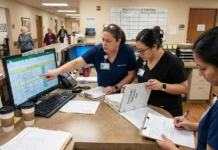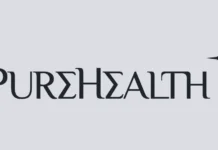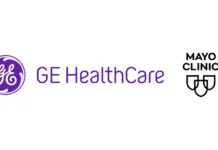While consumer directed healthcare (CDH) is receiving wide-spread attention from the media, the scope is often on electronic medical record adoption or health savings accounts. While these are important developments in improving care and lowering costs, they do little to address the critical aspects of patient education, satisfaction and empowerment. In this new era when the Center for Medicare and Medicaid Services (CMS)-enforced HCAHP performance measures may impact Medicare reimbursement rates for hospitals, what can hospitals do to ensure patient education and satisfaction? In other words, how can you ensure patient empowerment?
While consumer directed healthcare (CDH) is receiving wide-spread attention from the media, the scope is often on electronic medical record adoption or health savings accounts. While these are important developments in improving care and lowering costs, they do little to address the critical aspects of patient education, satisfaction and empowerment. In this new era when the Center for Medicare and Medicaid Services (CMS)-enforced HCAHP performance measures may impact Medicare reimbursement rates for hospitals, what can hospitals do to ensure patient education and satisfaction? In other words, how can you ensure patient empowerment?
Empowerment is a broad buzz word today, but any patient in a hospital room understands its true meaning. My own patient experience with cancer taught me that. Lying in my hospital bed, recovering from surgery to remove a malignant stomach tumor. Too uncomfortable to read, I spent countless hours staring aimlessly at an outdated TV. The days grew longer. I craved information about my condition, management of the upcoming chemotheraphy program, communication with friends and family and connectivity to the outside world. I felt a complete loss of empowerment.
Meeting the Quality and Patient Satisfaction Mandate
There are public and private pressures to raise not only quality of care but also patient satisfaction. The 2006 HIMSS Leadership survey revealed that meeting patient satisfaction and safety goals are the leading priorities on the healthcare IT agenda.
CMS is recommending measurement of patient opinions through a new Hospital Consumer Assessment of Healthcare Providers and Systems (HCAHPS) survey administered after patients leave the hospital. Voluntary today, the data collection and public reporting of patient satisfaction is expected to soon become mandatory. CMS has indicated that satisfaction measures will be added to quality measures to determine reimbursement rates in the future. In other words, a hospital will lose money through poor patient satisfaction, and conversely gain for high patient satisfaction.
There are additional drivers for patient-centric tools. The aging baby-boomer generation, increased life expectancy and rising immigration trends are putting service pressure on the healthcare system. Hospital executive team compensation is often tied to patient satisfaction and quality scores. In today’s market, hospitals compete fiercely for physician, nurse and patient loyalty, making service differentiation very important. New hospital construction will add 200,000+ beds by the end of this decade, many in cardiology, oncology and women’s services. These service lines have demanding patients with heavy education and discharge requirements. The well documented U.S. nursing shortage has hospitals aggressively searching for tools that streamline the administrative duties of nurses which currently command more than 55 percent of their time.
Emerging technologies like electronic medical records or e-prescribing are no doubt helpful in improving care and reducing costs. However they are not patient facing tools, and do not actually help in patient education, pain assessment /management, real time feedback and interaction that directly contribute to the patient experience that determines HCAPHS scores.
A new category of patient tools called Interactive Patient Care (IPC) help hospitals meet these service and quality compliance requirements. Patient engagement is a key leverage point for these initiatives. Using bedside monitors or televisions, IPC provides hospitals with tools to meet discharge education, medication teaching, patient safety and pain management requirements. Simultaneously, IPC engages patients to provide real-time feedback to their caregivers, as well as provides interactive capabilities and entertainment features available at home (or in a hotel) – helping hospitals achieve higher HCAPHS scores. Through bi-directional interfaces with hospital HIT systems, IPC automates time-consuming nursing tasks such as patient education, pain assessments and required documentation. Quality and service improvements lead to better outcomes.
Interactive Patient Care in Action
Consider for example Inova Fair Oaks Hospital, a 182-bed hospital serving Northern Virginia. As part of a quality initiative, Fair Oaks took on the great challenge of improving quality and services to become the best-rated hospital in the area for patient satisfaction. Fair Oaks wanted to find new ways to distinguish itself, improve patient education and satisfaction and ultimately empower patients to be part of their own care process.
Inova Fair Oaks implemented an Interactive Patient Care system directly at the patient’s bedside. It guides patients through their hospital stay, providing access to the people and resources they need to have an optimal care experience. The system brings a host of education, entertainment and communication technologies to the bedside via hospital room television monitors.
Todd McGovern, Senior Director of Operations at Inova Fair Oaks reports that bringing an IPC system into the healthcare system was a unique opportunity. The hospital’s vision was one in which patients can learn about their condition, collaborate with their caregivers, secure helpful services, and enjoy entertainment resources – all from their hospital bed.
With the system in place, the staff had a tool which communicated the patients’ needs in real-time. Because the feedback is automated to go to the appropriate department (such as environmental, engineers, or food service employees), staff members are directly connected to patient care. Furthermore, since the appropriate department is alerted of an issue immediately, the problem can be fixed as soon as it is reported. Patients feel more satisfied because they see the staff responding quickly to their needs. This tool is also a great time-saver for the nurses, who no longer need to be the intermediary between the patients’ feedback and the staff who can fulfill these requests.
Another time-saving feature, the IPC system automates the clinical and non-clinical processes, including patient education, pain assessment, service excellence practices, admission and discharge instructions. At Inova Fair Oaks, the response rate for these surveys doubled in one year after implementing an IPC system. This is a big benefit for the nursing staff in helping with regulatory compliance efforts.
The technology also automates the completion of patient surveys, the delivery of effective educational materials to patients, and the patient’s ability to make comments or take notes in advance of a doctor’s visit. The staff finds this feature especially motivating, as patients will often use the “send a compliment” feature to reward a job well done. Inova Fair Oaks has used the feedback generated through the GetWellNetwork system to create actionable data to improve patient care and patient satisfaction throughout the hospital.
What to Look for in an IPC Solution
The ideal interactive patient care system should be under a single platform as opposed to disparate components, which makes for unnecessary integration and maintenance issues. The service must be easy-to-use and clinically relevant for patients, otherwise usage rates will suffer and the value of the system drops. To maximize return for the hospital, the IPC system should be integrated into the delivery of care for nurses and physicians. The IPC should be treated as a critical link between existing health information systems and patients at the point-of-care.
To be truly interactive, the IPC software should automatically deliver pertinent information to patients at the bedside via monitors, automating and documenting quality and service requirements. This data in turn makes HCAPHS reporting comprehensive and efficient. If the hospital relies on the patients to search and pull down the same information, response rates plummet. The IPC systems should include real-time results tracking to instantly determine core measures compliance, service excellence benchmarks, and outcomes predictors that in turn can impact financial performance.
For CDH to truly succeed, consumers must be personally impacted and personally empowered on the front lines of care – at the hospital bedside, from acute-care to ambulatory care to long-term care settings. IPC solutions are important tools, complementary to EMR and hospital IT systems, but more directly patient-centric applications whose delivery at the point-of-care ensures the completion of service and quality requirements for hospitals. This improves not only patient care and outcomes, but drives new revenue opportunities and operational efficiencies for healthcare providers.



















